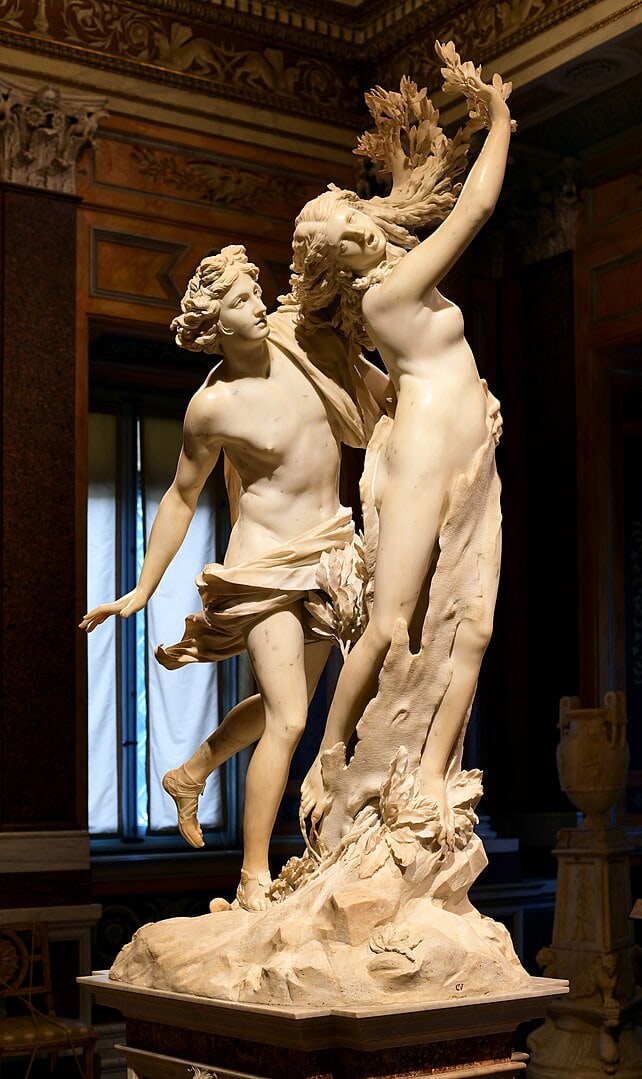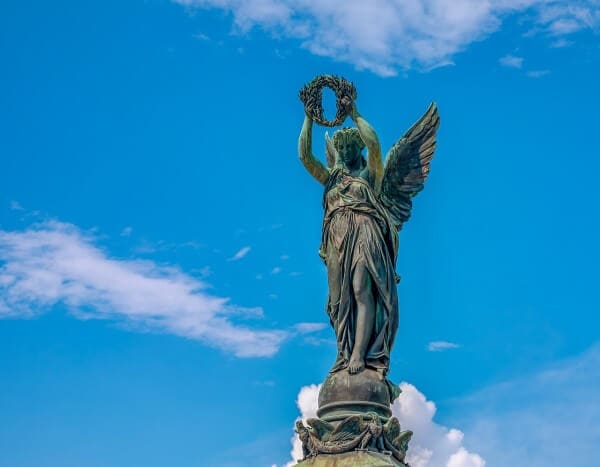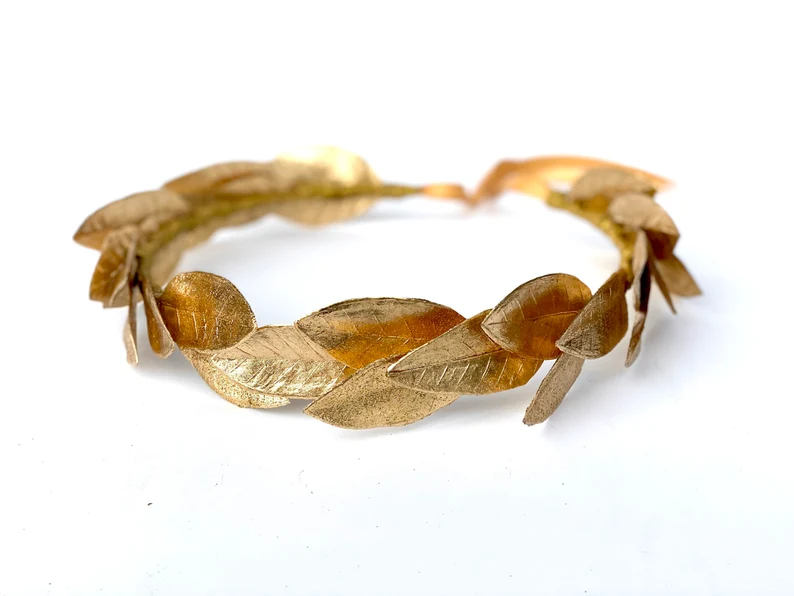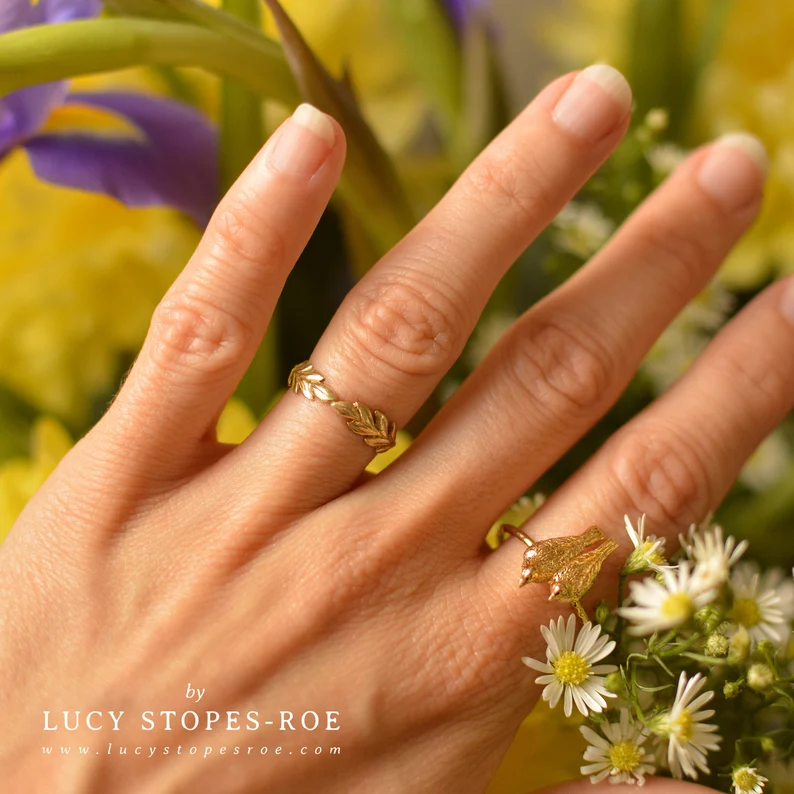
Table of Contents
In ancient times, emperors and victors would wear laurel wreaths to signify their power, achievements, and authority. These were made from the interwoven leaves of the bay laurel plant. The laurel wreath became such a powerful symbol that even today, people use it on diplomas, medals, and other objects that signify achievement. But why were laurel leaves chosen for this function and what else does it signify?
History of the Laurel Wreath
The laurel tree, commonly known as the Laurus nobilis, is a large shrub with green, smooth leaves, native to the Mediterranean region. In ancient Greece, it was a symbol dedicated to Apollo, and later adopted by Romans as a symbol of triumph. Here’s how it became a symbol of victory.
Apollo and Daphne

In the Greek myth of Apollo and Daphne, laurel symbolized unrequited love. Apollo fell in love with the nymph Daphne, but she didn’t return his love. To escape his lustful chase, Daphne transformed into a laurel tree. Apollo was beside himself with grief at what he had caused Daphne to do. The laurel tree became one of his symbols. This is why Apollo is often depicted wearing a laurel wreath.
The Pythian Games
When the ancient Pythian Games, a series of athletic festivals and musical competitions, were established, it was held in honor of Apollo. As the god of music, poetry, and sports, the games were within Apollo’s domain. It became custom to crown the winners with laurel wreaths. Over time, the laurel wreath became the equivalent of a modern Olympic medal. It was highly coveted as it symbolized victory and highlighted the athletes’ achievements.
Goddesses of Victory: Nike and Victoria

We know that the Romans borrowed a lot from the ancient Greeks. So naturally, many of the traditions of ancient Greece can be found in ancient Roman religion. Because the laurel wreath had become a symbol of victory, it was common for the goddess Nike to be seen with it. The Roman equivalent of Nike, Victoria, the goddess of victory, was also depicted crowning gods and emperors with a laurel wreath in her hands. From the coins of Octavian Augustus to coins from the time of Constantine the Great, emperors were portrayed with a laurel wreath on the head.
Modern Uses of the Laurel Wreath
This symbolism carries on today, particularly in academic circles, where a laureate denotes someone who has achieved distinction in a particular field, such as a Nobel laureate. Do you know some colleges around the world crown graduates with a laurel wreath as a symbol of victory, in terms of academic achievements? The motif is also imprinted on modern-day Olympic gold medals, and commonly used in logos and heraldry.
Meaning and Symbolism of Laurel Wreath

There are various meanings for the laurel wreath that goes beyond being a symbol of victory. Here are some of them:
- Victory and Achievement: In ancient Greece and Rome, laurel wreaths were given to victors in athletic competitions, including the ancient Olympic Games, and to generals who led their armies to victory. The wreath represented the achievement and glory of the victor.
- Wisdom and Knowledge: Apollo was the god of wisdom and the arts. This association has linked the laurel wreath with intellectual achievement and scholarly pursuits.
- Peace: Roman generals wore laurel wreaths during times of peace. This practice linked the laurel wreath to peace and tranquility.
- Immortality and Resilience: Laurel trees are evergreens, so they retain their leaves throughout the year. For this reason, the laurel wreath is also a symbol of immortality and resilience.
- Divine Favor: In both Greek and Roman depictions, deities such as Nike, Victoria, and Apollo are often shown bestowing laurel wreaths upon mortals, suggesting divine favor or endorsement.
- Status and Authority: Emperors and other high-ranking officials in Rome often wore laurel wreaths as a sign of their status and authority. This can be seen on coins and sculptures even today.
- Protection: It was believed in Roman times that the laurel tree was immune to lightning strikes, and so the laurel wreath also became a symbol of protection, especially from the divine wrath of the gods.
Through the ages, the symbolism of the laurel wreath has been incorporated into various cultures and disciplines, including architecture, literature, and modern athletics.
According to The American Journal of Philology, laurel leaves were used in purification rites. In folklore, after Apollo had slain the Python, he purified himself with a laurel, which was thought to protect the slayer from evil spirits whether they were those of beasts or men.
Gifting a Laurel Wreath

Because of its association with victory, success and achievement, items depicting a laurel wreath makes for symbolic gifts. Here are some occasions when a laurel wreath gift is ideal:
- Graduation Gift: As a gift to a new graduate, the laurel wreath symbolizes success and achievement, but also a look towards the future and a wish for future success. Consider jewelry or a decorative item depicting the symbol.
- Goodbye Gift: For a loved one moving away, a laurel wreath gift wishes them success and hope for the future.
- Anniversary Gift: As an anniversary gift for a loved one, a laurel wreath jewelry item speaks volumes. Some ideas it implies include: You’re my achievement; Together are successful; You’re my crowning glory; Our relationship is victorious.
- New Mom Gift: For a new mom, a laurel wreath gift symbolizes a new chapter and a great achievement.
- For a Person in a Difficult Situation: A laurel wreath gift is a reminder that they will overcome the situation to become victorious and successful. This is only a setback and shouldn’t define them.
FAQs About Laurel Wreath
A laurel wreath is used as a symbol of victory, success and achievement and dates back to Greek mythology. It can be used in decorative items or in fashion, as a meaningful symbol.
The laurel wreath is a popular tattoo symbol because of its associations with success and triumph. It can be seen as a symbol of victory over oneself and one’s vices.
Laurel, as a plant, has a sweet, spicy scent. It’s used in essential oils for its uplifting and invigorating aroma.
Yes, but it wasn’t a headdress worn on a daily basis. The laurel wreath was only worn by emperors or nobles who had achieved great success. It was an indication that they had triumphed.
The laurel wreath is mentioned in the New Testament, referenced by Paul who was influenced by Greek culture. He mentions a victor’s crown and a non-fading crown, while James mentions a laurel crown for those who persevere.
In Brief
The laurel wreath has a special place in ancient Greek and Roman cultures, and its symbolism survives to this day. Whether represented in leaves or precious material, it remains a symbol of honor and victory. Even today, this symbol is used worldwide to represent these concepts, in fields such as sports and education.

Related articles
Hamsa Hand: A Potent Symbol of Protection
Deep Meaning and Symbolism of the Sri Yantra
7 Profound Meanings of the Infinity Symbol
Five-Fold Symbol – Origins, Meaning and Symbolism
Enso Symbol – What Does It Really Mean?







